
 Seepage in irrigation canals is an insidious problem, often hidden beneath the surface, yet it poses a significant threat to the efficiency and safety of water delivery systems. This common issue arises when water infiltrates through the soil surrounding the canal, leading to water loss and potential structural damage. Understanding and addressing seepage is crucial for maintaining the integrity and functionality of irrigation canals.
Seepage in irrigation canals is an insidious problem, often hidden beneath the surface, yet it poses a significant threat to the efficiency and safety of water delivery systems. This common issue arises when water infiltrates through the soil surrounding the canal, leading to water loss and potential structural damage. Understanding and addressing seepage is crucial for maintaining the integrity and functionality of irrigation canals.
The Role of Polyurethane Leak Seal Grout
One of the most promising solutions in the fight against seepage is the use of polyurethane grout. A standout product in this category is Spetec PUR HighFoamer. This polyurethane grout excels in sealing problematic seepage areas. Its expansive nature allows it to seal voids and help stabilize the substrate, creating a waterproof barrier that halts the flow of water through the soil.
Curtain and Probe Grouting
To tackle seepage more comprehensively, curtain and probe grouting techniques are employed. Curtain grouting involves injecting grout into the ground along the length of the canal, forming a "curtain" that blocks water pathways in the soil. This method is particularly effective in areas with pervasive seepage, creating a continuous barrier that addresses multiple leakage points simultaneously.
Probe grouting accomplishes similar results as curtain grout. Using probes or Tube-a-Manchettes, grout is injected directly into specific seepage paths identified within the soil. This technique is can yield excellent curtain grouting results, or it can pinpoint isolated, high-seepage areas, allowing for precise application and minimal disturbance to the surrounding environment.
Practical Application
In real-world scenarios, the choice between curtain and probe grouting often depends on the nature and extent of the seepage problem. For instance, curtain grouting might be used along a stretch of canal where seepage is a widespread issue, effectively creating a watertight barrier along the canal's perimeter. In contrast, probe grouting might be applied in areas where water loss is detected at specific points, allowing for a more focused and cost-effective approach.
Both methods have shown remarkable efficacy in preserving water levels and maintaining the structural integrity of canal systems. They also offer a long-term solution, significantly reducing the need for frequent maintenance and repairs.
Combatting Seepage
The use of advanced grouting techniques has proven effective for maintaining irrigation canals over time. The next post will explore the ongoing challenges posed by wildlife burrows and tunnels. Expect a thorough discussion of integrated wildlife management strategies, combined with time-tested repair methods.
Want more information on sealing leaks with polyurethane grout?



 In new construction projects, establishing a solid foundation for footings and slabs is crucial, especially in challenging soil conditions. Polyurethane foam offers a groundbreaking approach to improving soil stability, a key factor in the longevity and safety of new structures.
In new construction projects, establishing a solid foundation for footings and slabs is crucial, especially in challenging soil conditions. Polyurethane foam offers a groundbreaking approach to improving soil stability, a key factor in the longevity and safety of new structures.


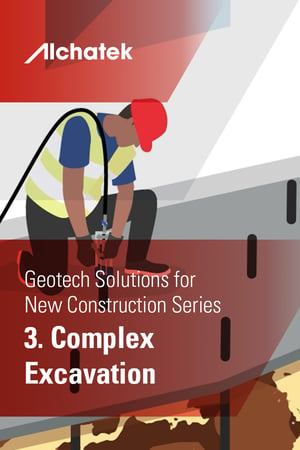 As construction excavation projects continue to push the boundaries of complexity, innovative solutions are needed to ensure safety and stability. Polyurethane foam has emerged as an indispensable tool for these unique challenges. With a dual capability to stabilize soil and complement traditional retaining methods like sheet piling or secant walls, polyurethane foam provides robust support precisely when and where it is most needed. Whether plugging gaps to prevent infiltration, enhancing structural support, or sealing out soil in deep foundation pits, this versatile material enables advanced excavations that would otherwise be extremely risky if not impossible.
As construction excavation projects continue to push the boundaries of complexity, innovative solutions are needed to ensure safety and stability. Polyurethane foam has emerged as an indispensable tool for these unique challenges. With a dual capability to stabilize soil and complement traditional retaining methods like sheet piling or secant walls, polyurethane foam provides robust support precisely when and where it is most needed. Whether plugging gaps to prevent infiltration, enhancing structural support, or sealing out soil in deep foundation pits, this versatile material enables advanced excavations that would otherwise be extremely risky if not impossible.
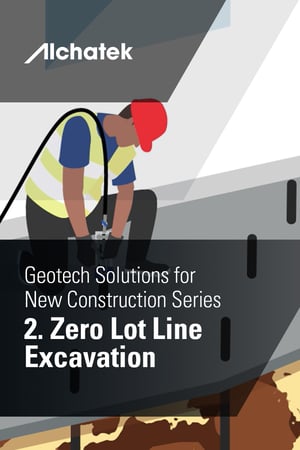 Excavating near existing structures, particularly in zero lot line scenarios like building additions, poses unique challenges. Traditional methods like sheet piling, while effective, can cause issues such as adjacent structure disruption, soil settlement, and excessive noise, making them less ideal in dense, urban environments.
Excavating near existing structures, particularly in zero lot line scenarios like building additions, poses unique challenges. Traditional methods like sheet piling, while effective, can cause issues such as adjacent structure disruption, soil settlement, and excessive noise, making them less ideal in dense, urban environments.
 Road widening projects, essential for improving traffic flow and infrastructure, traditionally involve digging up and replacing unstable soil. This method, however, poses risks to existing roads and is both costly and time-consuming. The use of polyurethane foam to stabilize existing soil is often more efficient and effective.
Road widening projects, essential for improving traffic flow and infrastructure, traditionally involve digging up and replacing unstable soil. This method, however, poses risks to existing roads and is both costly and time-consuming. The use of polyurethane foam to stabilize existing soil is often more efficient and effective.
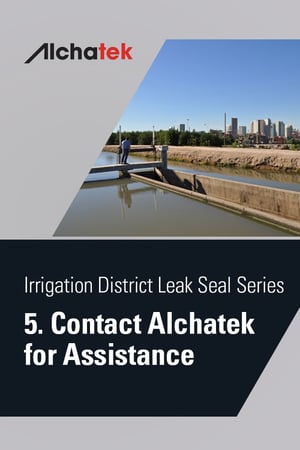 Maintaining irrigation canals effectively is a complex task that often requires specialized knowledge and skills. While do-it-yourself approaches can be useful for minor issues, more intricate challenges in canal maintenance typically necessitate professional input.
Maintaining irrigation canals effectively is a complex task that often requires specialized knowledge and skills. While do-it-yourself approaches can be useful for minor issues, more intricate challenges in canal maintenance typically necessitate professional input.


 Concrete-lined canals are a cornerstone of modern irrigation infrastructure, designed for efficient water conveyance. However, one of the challenges faced with these systems is leaking panel joints. These joints, where concrete panels meet, can become vulnerable points, undermining the efficiency of the canal, and leading to water loss. Sealing these leaks is crucial for maintaining the structural integrity and operational efficacy of lined canals.
Concrete-lined canals are a cornerstone of modern irrigation infrastructure, designed for efficient water conveyance. However, one of the challenges faced with these systems is leaking panel joints. These joints, where concrete panels meet, can become vulnerable points, undermining the efficiency of the canal, and leading to water loss. Sealing these leaks is crucial for maintaining the structural integrity and operational efficacy of lined canals.
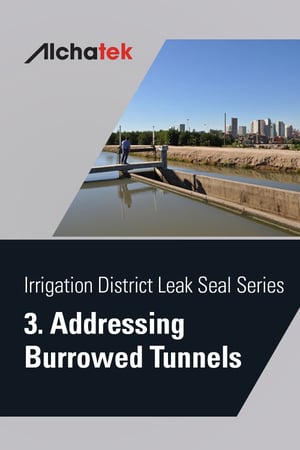 In the world of irrigation canal maintenance, wildlife-induced challenges often lurk out of sight. Gophers, muskrats, and beavers can create complex tunnel networks in canal berms, leading to significant water leakage. These wildlife burrows, if not properly addressed, can result in water escaping from the canal, seeping into the surrounding land, and potentially causing damage to nearby agricultural areas.
In the world of irrigation canal maintenance, wildlife-induced challenges often lurk out of sight. Gophers, muskrats, and beavers can create complex tunnel networks in canal berms, leading to significant water leakage. These wildlife burrows, if not properly addressed, can result in water escaping from the canal, seeping into the surrounding land, and potentially causing damage to nearby agricultural areas.
 Seepage in irrigation canals is an insidious problem, often hidden beneath the surface, yet it poses a significant threat to the efficiency and safety of water delivery systems. This common issue arises when water infiltrates through the soil surrounding the canal, leading to water loss and potential structural damage. Understanding and addressing seepage is crucial for maintaining the integrity and functionality of irrigation canals.
Seepage in irrigation canals is an insidious problem, often hidden beneath the surface, yet it poses a significant threat to the efficiency and safety of water delivery systems. This common issue arises when water infiltrates through the soil surrounding the canal, leading to water loss and potential structural damage. Understanding and addressing seepage is crucial for maintaining the integrity and functionality of irrigation canals.
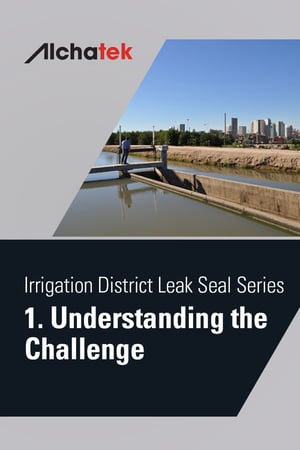 Irrigation canals are lifelines of the American agricultural landscape. Spanning thousands of miles across the country, irrigation canals deliver vital water resources to farmlands, fostering the growth of crops that feed millions. However, maintaining the integrity of these extensive waterways is a challenge that often goes unseen, yet is crucial for the sustainability of our agricultural system.
Irrigation canals are lifelines of the American agricultural landscape. Spanning thousands of miles across the country, irrigation canals deliver vital water resources to farmlands, fostering the growth of crops that feed millions. However, maintaining the integrity of these extensive waterways is a challenge that often goes unseen, yet is crucial for the sustainability of our agricultural system.
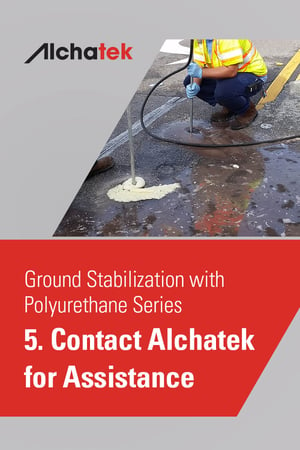 Each ground stabilization project is unique. The Alchatek support team is skilled in assessing different challenges and devising solutions tailored to specific requirements, whether for residential, commercial, or industrial purposes.
Each ground stabilization project is unique. The Alchatek support team is skilled in assessing different challenges and devising solutions tailored to specific requirements, whether for residential, commercial, or industrial purposes.